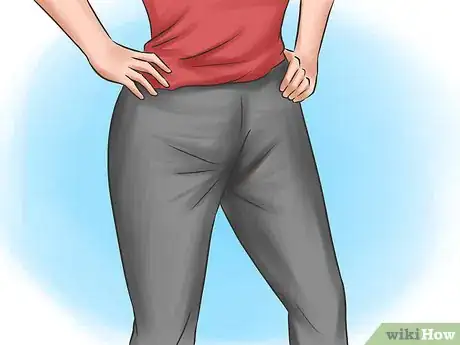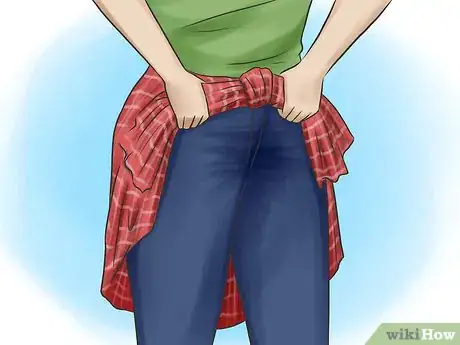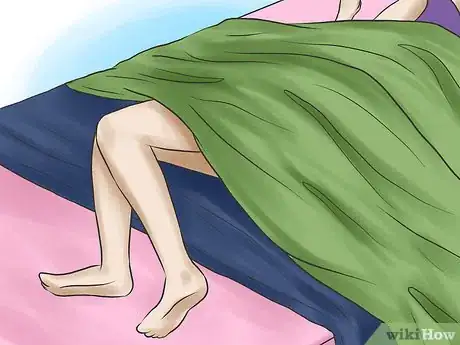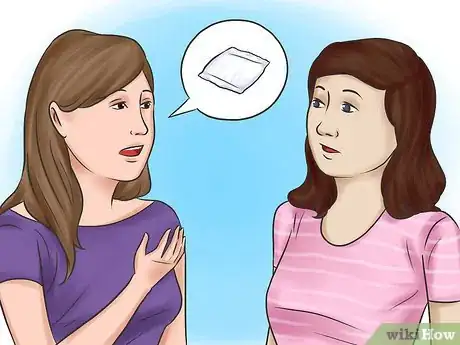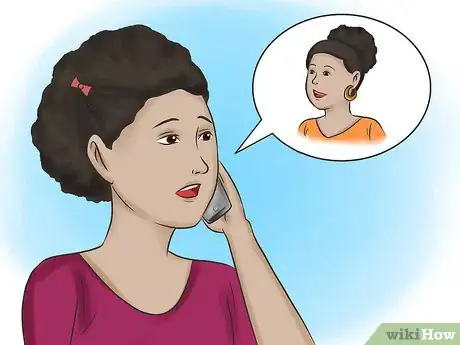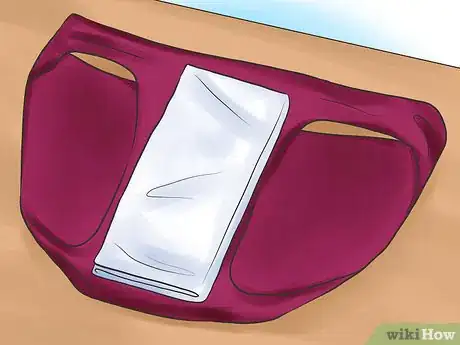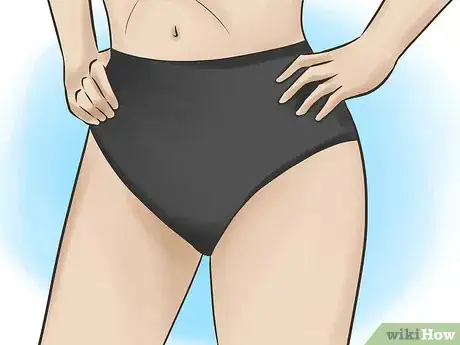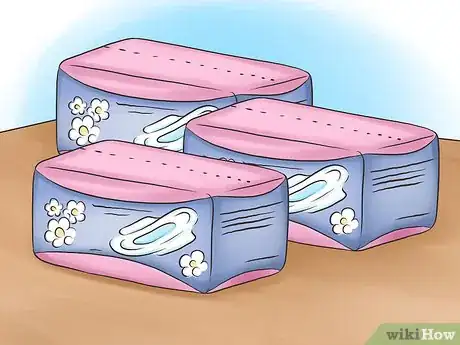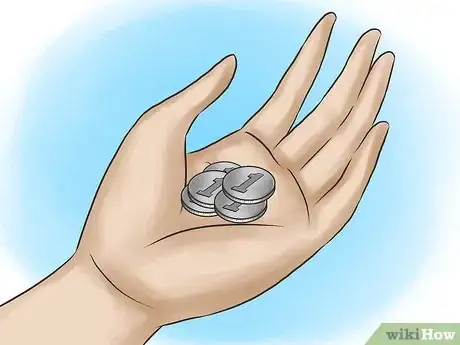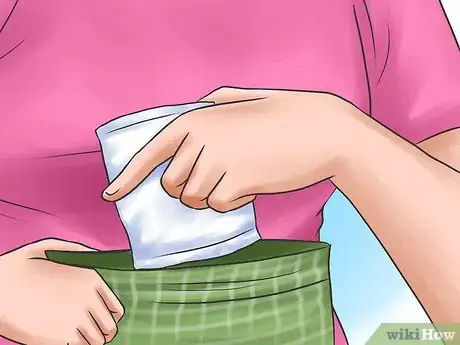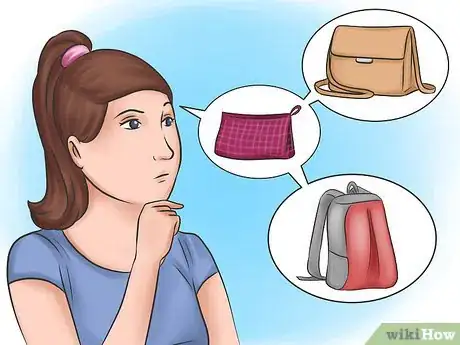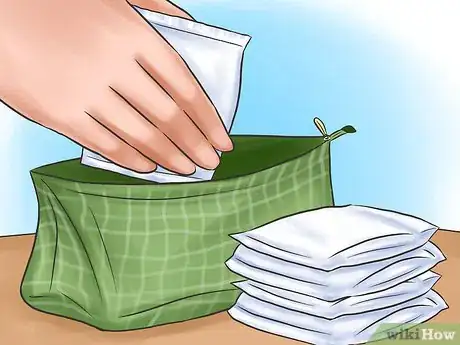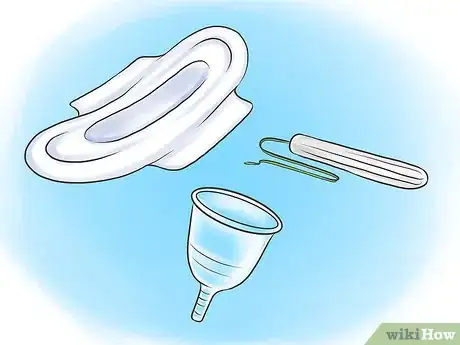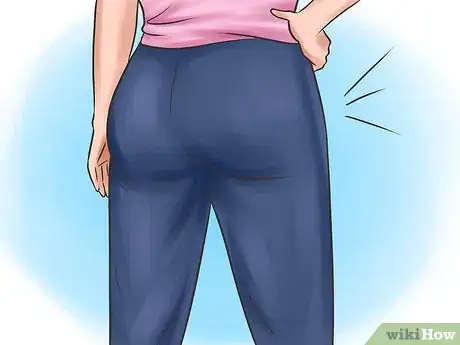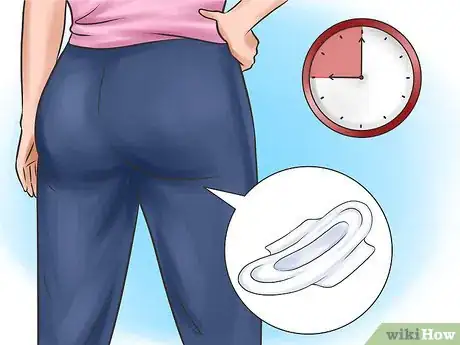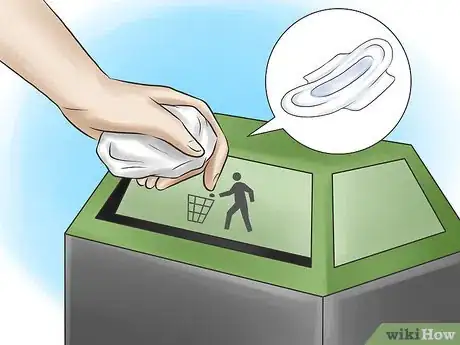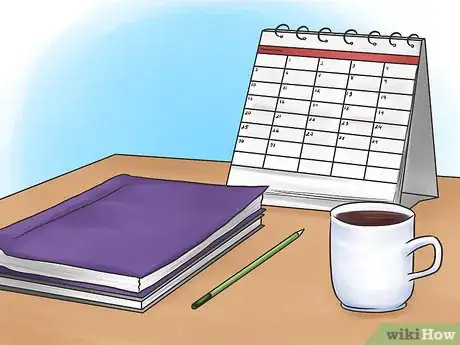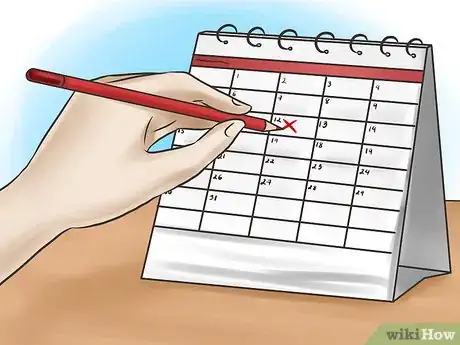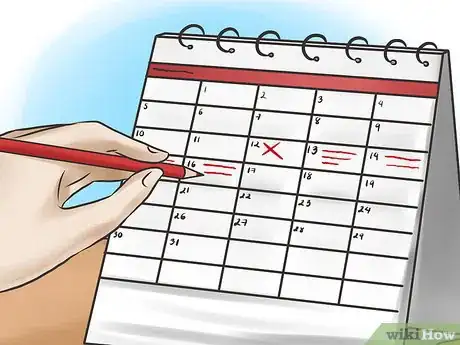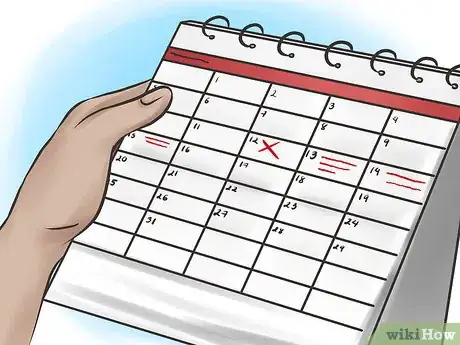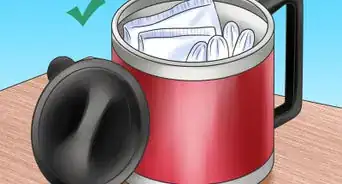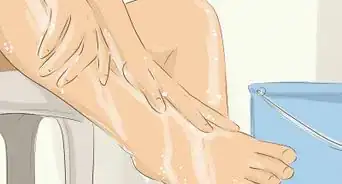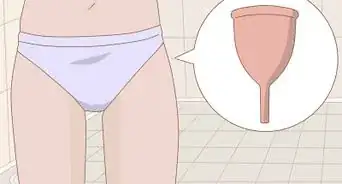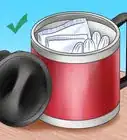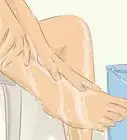This article was co-authored by Rebecca Levy-Gantt, MPT, DO. Dr. Rebecca Levy-Gantt is a board certified Obstetrician and Gynecologist running a private practice based in Napa, California. Dr. Levy-Gantt specializes in menopause, peri-menopause and hormonal management, including bio-Identical and compounded hormone treatments and alternative treatments. She is also a Nationally Certified Menopause Practitioner and is on the national listing of physicians who specialize in menopausal management. She received a Masters of Physical Therapy from Boston University and a Doctor of Osteopathic Medicine (DO) from the New York College of Osteopathic Medicine.
There are 19 references cited in this article, which can be found at the bottom of the page.
wikiHow marks an article as reader-approved once it receives enough positive feedback. In this case, 100% of readers who voted found the article helpful, earning it our reader-approved status.
This article has been viewed 270,620 times.
A period is not something to be ashamed of. However, it can be annoying sometimes: it can stain clothing, lead to embarrassing situations, and get in the way of normal activities. If you want to make sure that your period is kept private, a little preparation can go a long way.
Steps
Dealing with Accidents
-
1Wear dark colors during your period. If you are worried about accidents and leaks, dark clothing can be a godsend. Wear underwear and pants that are navy, black, or dark brown. These are less likely to show signs of your period leaking and they are less likely to get noticeable permanent stains.
-
2Tie a sweater around your waist. If you are caught out in public with stained pants, simply tie a sweatshirt, sweater, or large shirt around your waist. This will help you hide the stain until you are able to go home for a change of clothing.
- If someone asks you about it, you can just say that you were feeling too warm to wear the sweater. Alternatively, you can tell them that you are experimenting with '90s fashion.[1]
Advertisement -
3Sleep on a dark-colored towel. Especially when you are first getting used to the rhythms of your period cycle, you might experience more leaks overnight when you cannot change your pad or tampon frequently. Find a dark-colored, old towel that you do not mind staining. Lay this across your bed to protect your sheets.
-
4Ask for a a pad or tampon. If you are out with friends, you can ask if a friend has a spare tampon or pad in their purse. If you are in a public bathroom, you can ask another woman if she has spare period supplies. Many public bathrooms also have coin-operated pad and tampon dispensers you might use. If you are surprised by your period while at school, take a trip to the school nurse.[2] The nurse will probably have an extra supply of pads and tampons. Don't be embarrassed: your school nurse will have helped dozens of young women in this exact same situation.[3]
-
5Call a friend or family member for help getting new clothes. If you have a period accident at school and do not have a change of clothing, get permission to call your parents. Your teachers will likely be sympathetic to your plight, and you will not be the first student they've had who needed a change of clothing.[4] If you are stuck at work, see if a family member might be able to bring you a change of clothes over the lunch hour.
-
6Wash stained clothes immediately in cold water. If your period has leaked onto your clothing, all is not lost. There are techniques you can use to remove the stain. Rinse the stained item in cold water as soon as you can. Use hydrogen peroxide to treat stains on light items, and use a colorfast stain remover on darker items.[5] Agitate the stained fabric by rubbing the fabric together with your fingers. After treating the stain, place the item in the wash on a cold cycle. Repeat if necessary.
- Never use hot water to remove a blood stain. Heat simply sets the stain and makes it permanent.
- Always air-dry items you think might be stained. An electric dryer might set the stain.
-
7Double up on period protection. If you are worried about leaks, try using two forms of period protection at the same time. If one form of protection begins to leak, you have the second form of protection as back-up, which will buy you some time.[6]
- For example, you could wear a menstrual cup along with a sanitary napkin. Or you might wear a panty-liner along with a tampon.
-
8Make an emergency sanitary napkin out of toilet paper. If you are out in public without any form of period protection and cannot borrow or purchase extras, make an emergency pad using toilet paper. Get to a restroom that has plenty of spare toilet paper. Wrap a roll of toilet paper around your hand 6-7 times. Place this wad of toilet paper in your underwear. Then secure your emergency pad to your underwear by wrapping them together using a long piece of toilet paper. Wrap them together using at least 4-5 loops.[7] While this emergency pad won't hold up for long, it might last you until you can get home to change clothes and grab new tampons.
-
9Wear absorbent underwear. There are several clothing products that are designed to absorb period leaks and stains, such as absorbent underwear. If you are worried about your tampons, pads, or period cups leaking, absorbent underwear will help keep the accident under control, and your pants won't get stained.[8]
-
10Talk to your doctor if you experience frequent leaks and accidents. If you have period accidents because you are bleeding heavily for long periods of time, you should discuss this matter with your physician. While most women experience some heavy days of their period, soaking through one tampon per hour for many hours in a row is not normal and might be a sign of an underlying medical condition.[9] Experiencing very heavy bleeding for more than just a couple of hours is a signal that you should talk to your doctor. If you find yourself soaking through pads or tampons very quickly, make an appointment right away.[10]
Assembling Extra Supplies for Emergencies
-
1Buy extra boxes of your favorite period products. Make sure that you have products that work for your light days and your heavy days. You want to be prepared for any stage of your period. Sanitary napkins and tampons take a long time to expire as long as they are stored in a cool, dry place, so it is okay for you to have several extra boxes in your home.
-
2Purchase several opaque waterproof bags. Sanitary napkins and tampons can be ruined by moisture. Moisture can ruin the wrappers and make the products unhygienic.[11] Look for waterproof bags where you can store your period supplies safely. An opaque bag will allow you to walk to the bathroom without showing off your period supplies to your classmates.
- If you cannot find an opaque waterproof bag, consider doubling up. Place a small,clear, waterproof plastic bag inside a small opaque bag. You will get the waterproofing benefits as well as your desired privacy.
-
3Hang on to extra pocket change. Most schools and public bathrooms will only supply a coin-operated tampon and sanitary napkin dispenser. Hold on to extra change in case you need to use one of these dispensers in an emergency. A few schools, however, are starting to provide free menstrual products for their students.[12]
-
4Assemble several period kits. Place 3-5 tampons or sanitary napkins along with a few coins inside each waterproof bag. Make sure that you include tampons or pads for both lighter and heavier flow days. These kits will not see you through an entire period, but they will see you through a full day at work or school, and you can always restock them at home.
-
5Stash your period kits at home, work, and school. Take a few minutes to think about good places where you might stash a few extra sanitary napkins or tampons. Some good places to store emergency period supplies include:
- Your backpack or gym bag.
- Your favorite handbags.
- Your desk drawer at work.
- Your locker at school.
- Your locker at the gym.
-
6Refill your period kits as necessary. Remember to refresh your period supplies each month. Periods can sometimes be unpredictable, so you will want to be prepared and have period supplies handy. Even if you do not end up using your emergency period kits, you might have friends who will be grateful that you were so well prepared.
-
7Keep extra underwear and leggings handy. Not everyone has access to a large locker or private office to store clothing. But if you are lucky enough to have a place to store clothes, have an extra pair of clean underwear and clean pants or leggings available. If your period leaks at work or school, you will be able to change discreetly.
Using Period Supplies Correctly
-
1Experiment with various menstrual products. There are many kinds of safe and hygienic menstrual products on the market. These include sanitary napkins (aka maxi pads), tampons, and menstrual cups. Many people have a strong preference for the menstrual product they use. Other women combine menstrual products and use several over the course of a period. Try different products whenever you get your period to discover what works best for you and your cycle.
- Sanitary napkins are absorbent pads that adhere to your underwear. They come in many different varieties and strengths--from panty-liners for light days to extra long overnight pads for heavier days. They need to be changed every few hours and whenever they are filled. Sanitary napkins are the easiest products to use and might be the best choice for girls who have just started menstruating.
- Tampons are absorbent tubes that are inserted into the vagina. They absorb menstrual fluid before it reaches your underwear. This can help you hide the signs of your period. Tampons need to be changed every few hours and whenever they begin to leak. Note that leaving in a tampon for too long--or using a tampon that is too absorbent for your rate of flow--can cause serious problems such as Toxic Shock Syndrome. Be sure that you read all package instructions and follow their recommendations on how to use tampons healthily.[13]
- Menstrual cups are small, flexible cups made of silicone, latex, or medical-grade rubber. They are inserted into the vagina just under the cervix and create a liquid-proof seal. Cups are often washable and reusable, but they must be emptied and washed every 10-12 hours. They are a very safe option, but they might be difficult for younger girls to use correctly.[14]
-
2Try out discreet period products. Several companies have developed period products that help you keep your period under wraps. For example, there are now tampons and sanitary napkins with quiet wrappers and supplies that are small enough to fit easily in a pocket.[15] If privacy is important to you, try out a product with a quiet wrapper or an extra-small design. These supplies might help you keep your period a secret.
-
3Change your menstrual products frequently. Changing your period supplies every few hours will help reduce odors and reduce the likelihood of leaks.[16] Plus, you will be more comfortable and feel fresher. Remember that this is a health issue as well as a privacy issue: changing napkins and tampons every few hours reduces the risk of infection and complications.[17]
- Signs of Toxic Shock Syndrome--a possible complication of tampon use--include fever, dizziness, nausea, vomiting, diarrhea, and rash.[18] Discontinue tampon use and contact your doctor immediately if you experience these symptoms.
-
4Dispose of period supplies correctly. It can be tempting to flush sanitary napkins and tampons to keep our periods private. However, this can clog systems and lead to toilet backups.[19] Instead, wrap the used pad or tampon in several layers of toilet paper and throw it in the garbage. Some period products also have plastic wrappers that can be used to wrap used pads and tampons.
- Most public bathrooms will provide a small, sanitary, covered garbage can specifically designed for menstrual product disposal.
- If you are using your own bathroom at home, make sure your bathroom garbage can has a lid--especially if you have pets.[20]
Knowing When Your Period Will Arrive
-
1Buy a calendar. One of the easiest ways to hide signs of your period is knowing when your period will arrive. Find a small wall calendar or desk calendar that you can keep at home. Make sure it is a 365-day calendar. You will use this calendar to track your cycle so that you can be prepared.
- An alternative to a physical calendar is an app that you can purchase on your phone. If you have ready access to a smartphone, consider finding a period tracking app that can help remind you when your period is expected to begin.[21]
-
2Mark the first day and last day of your period on the calendar. At the first sign of your period, note it on the calendar with an X or a red checkmark.[22] Make the same mark on the calendar on the day that your period has concluded. This will help you figure out how long your cycle is and will help you estimate when your next period will arrive. Most periods last 2-7 days.[23]
- Keeping a menstrual calendar is also useful to women who are interested in getting pregnant or in avoiding pregnancy since it will help you determine when you ovulate each month.[24]
-
3Note important details of your period on the calendar. These details include the rate of your flow (light or heavy), changes in the period's texture (such as clots), and whether you experience other period symptoms such as cramping or tiredness. All of these details can help you determine the supplies you need each month and when you will use them.[25] These details might also be useful information to share with your doctor if you notice any significant changes to your cycle.
-
4Repeat every cycle. Period calendars work best when you keep them consistently and regularly.[26] The more exact and careful you are, the better. Remember that having knowledge about your body is the best way for you to get comfortable with your period.
-
5Determine your period cycle. Count the number of days between the start of your last cycle's period and the start of this cycle's period. For most women and girls, their cycle will be between 21-34 days, with 28 days being the average. However, a period cycle can be quite a bit longer than that, up to 45 days.
- Keep in mind that many people who have just begun their periods will take a while before developing a consistent cycle. Many people who have just started menstruating have irregular periods for a year or two. This is normal.[27]
- Note that period cycles can shift over time and in various situations, even for those who usually have regular periods. For example, some women notice changes to their cycles when they are stressed out, traveling, or in the company of other menstruating people. Often your period cycle will return to normal afterwards, but sometimes your cycle can make a lasting shift. Your calendar will be able to help you sort out the differences between a temporary change and a permanent change.
-
6Predict when your next period will begin. If you have a consistent cycle, you will be able to predict the day that your next period will arrive. Note these days when you expect your period on your calendar. On these days, be extra sure that you have extra period supplies such as tampons and sanitary napkins ready.
- Remember that it is not safe to use tampons before your period begins. You can, however, use a panty-liner or sanitary napkin on days when you expect your period to arrive any moment.
Warnings
- Periods are normal and healthy. But there are some period symptoms that are signals that you should see your doctor: skipping periods, bleeding in between periods, bleeding after sex, bleeding for more than 7 days, or experiencing a great deal of pain and nausea during your period.[29] Make an appointment with your physician if you have these symptoms.⧼thumbs_response⧽
- Tampons are great tools for managing your period. But Toxic Shock Syndrome is a possible complication, especially if you use high-absorbency tampons. Remember to call a doctor immediately if you experience dizziness, nausea, vomiting, fever, or a red rash during tampon use. Always change your tampon out after 4 hours of use.[30]⧼thumbs_response⧽
References
- ↑ http://www.bustle.com/articles/4011-how-to-wear-the-latest-90s-trend-shirts-tied-around-the-waist
- ↑ http://kidshealth.org/kid/grow/periods/period_school.html#
- ↑ Rebecca Levy-Gantt, MPT, DO. Board Certified Obstetrician & Gynecologist. Expert Interview. 3 April 2020.
- ↑ http://kidshealth.org/kid/grow/periods/period_school.html#
- ↑ https://www.ubykotex.com/get-the-facts/article?id=50745
- ↑ http://www.sheknows.com/health-and-wellness/articles/814189/choosing-the-right-protection-for-your-period-1
- ↑ https://www.ubykotex.com/get-the-facts/article?id=50742
- ↑ http://www.huffingtonpost.co.uk/2015/06/03/period-pants-thinx-invention_n_7499906.html
- ↑ Rebecca Levy-Gantt, MPT, DO. Board Certified Obstetrician & Gynecologist. Expert Interview. 3 April 2020.
- ↑ http://www.mayoclinic.org/diseases-conditions/menorrhagia/basics/tests-diagnosis/con-20021959
- ↑ http://www.goodhousekeeping.com/health/wellness/a32360/ways-youre-using-tampons-wrong/
- ↑ http://www.huffingtonpost.com/entry/high-school-free-tampon-dispenser-new-york_5604360ae4b00310edfa64da
- ↑ Rebecca Levy-Gantt, MPT, DO. Board Certified Obstetrician & Gynecologist. Expert Interview. 3 April 2020.
- ↑ http://www.mayoclinic.org/healthy-lifestyle/womens-health/expert-answers/menstrual-cup/faq-20058249
- ↑ http://www.theatlantic.com/health/archive/2015/06/dont-let-them-see-your-tampons/394376/
- ↑ http://kidshealth.org/teen/sexual_health/girls/supplies.html
- ↑ http://www.medicinenet.com/menstruation/page4.htm
- ↑ http://www.medicinenet.com/menstruation/page4.htm
- ↑ http://kidshealth.org/kid/grow/periods/pads_tampons.html#
- ↑ http://kidshealth.org/kid/grow/periods/pads_tampons.html#
- ↑ http://www.everydayhealth.com/womens-health/tracking-your-menstrual-cycle.aspx
- ↑ http://www.everydayhealth.com/womens-health/tracking-your-menstrual-cycle.aspx
- ↑ http://kidshealth.org/kid/grow/girlstuff/menstruation.html#
- ↑ http://www.everydayhealth.com/womens-health/tracking-your-menstrual-cycle.aspx
- ↑ http://always.com/en-us/tips-and-advice/your-first-period/period-calendar-why-track-your-menstrual-cycle
- ↑ http://always.com/en-us/tips-and-advice/your-first-period/period-calendar-why-track-your-menstrual-cycle
- ↑ http://kidshealth.org/kid/grow/girlstuff/menstruation.html#
- ↑ Rebecca Levy-Gantt, MPT, DO. Board Certified Obstetrician & Gynecologist. Expert Interview. 3 April 2020.
- ↑ https://my.clevelandclinic.org/health/healthy_living/hic_Coping_with_Families_and_Careers/hic_Normal_Menstruation/hic-abnormal-menstruation
- ↑ Rebecca Levy-Gantt, MPT, DO. Board Certified Obstetrician & Gynecologist. Expert Interview. 3 April 2020.
About This Article
Having your period is nothing to be ashamed of, but if you don’t want it to be obvious, you can easily hide it from everyone. Keep spare underwear, tampons, and pads in your bag and locker so you have easy access to them. If you get caught without any supplies, ask a friend to borrow some or buy products from a restroom dispensary. Although toilet paper isn’t very absorbent, you can make an emergency pad by wrapping it around your hand 6 or 7 times. It’s best to wear dark colored pants when you’re around your period, since these will be much less obvious if you leak. You can also tie a sweatshirt around your waist to hide any stains. For more tips, including how to work out when you’ll get your period so you won’t be surprised, read on.
